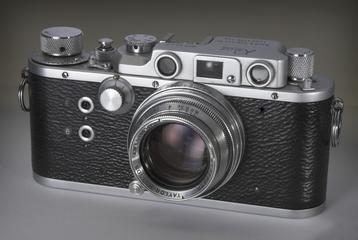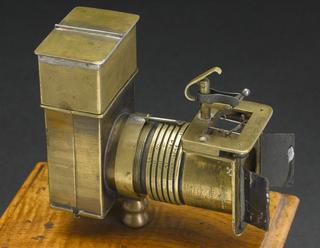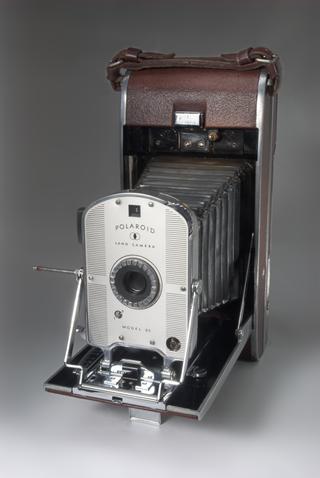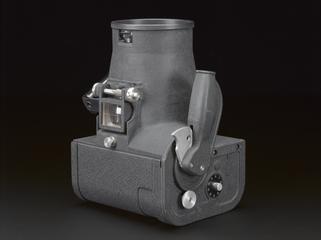
Thornton-Pickard Triple Extension "Imperial" Field Camera
- Made:
- 1908 in United Kingdom





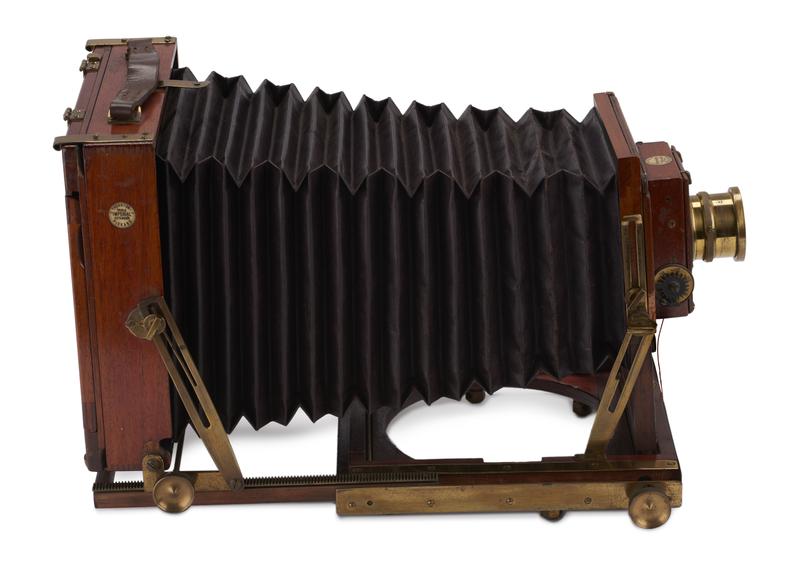
"Imperial" triple extension half-plate field camera with five plate holders by Thornton-Pickard.
This is a Thornton-Pickard “Imperial” field camera with a triple extension bellows.
Thornton-Pickard was a camera manufacturer, founded in Manchester 1888 by John Thornton and Edgar Pickard, but based in Altrincham from 1891. The new company’s products, particularly camera shutters, were initially designed by Thornton, who had already been manufacturing photographic equipment under his own name. Despite Edgar Pickard’s death in 1897 and John Thornton’s resignation in 1898, the firm gradually grew to become an important camera manufacturer in the years leading up to the First World War.
Thornton-Pickard launched the “Imperial” range of cameras in the early 1900s as a cheaper alternative to their more prestigious “Ruby” cameras, though still a high quality article, made using mahogany and brass. The Imperial was a traditional design of field camera for the time it was made. It produced images onto a glass negative coated with chemicals, which was developed in a chemical process to produce a finished photograph. The bellows lens folded up for storage or transport, and was extended when the photographer wished to use it. This particular example has a triple extension bellows, which allowed the lens to be extended further for a longer focal length, making it well suited for photographing distant objects. The size and weight meant it was best used on a tripod for posed photographs, rather than snapshots.
Details
- Category:
- Photographic Technology
- Object Number:
- Y1971.57
- Materials:
- brass (copper, zinc alloy), wood (unidentified), glass and leather
- Measurements:
-
holder (individual): 20 mm x 223 mm x 115 mm,
camera (folded, laid flat): 120 mm x 225 mm x 249 mm,
- type:
- camera
- credit:
- Gift of Mr. L. Hulme
